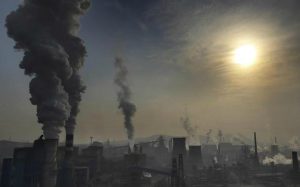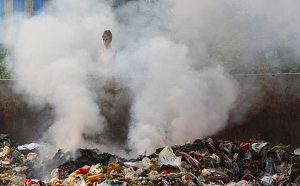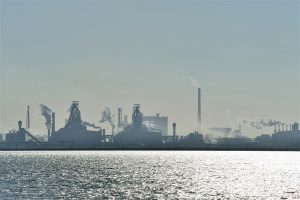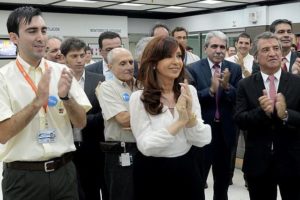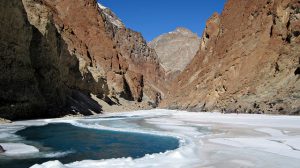The explosion of popular interest in Chai Jing’s ‘Under the Dome’ documentary, and signs that China is struggling to win the war on pollution, has given an even stronger voice to calls for an accurate measurement of air quality, mandated ‘safe limits’ for pollution, and stiffer penalties for polluters.
Wan Jie, an entrepreneur and delegate to this month’s Chinese People’s Political Consultative Conference, urged that that air quality measurement and fines be based on ‘environmental capacity’, which is the amount of a certain pollutant that is deemed safe to emit.
These ‘safe limits’ are fundamental to environmental regulation and planning, such as environmental impact assessments and pollution permits, and Wan Jie’s proposal draws upon research carried out by an environmental group, Chongqing Liangjiang Voluntary Service Centre.
In theory, permits for factories and power plants should only ever be issued once the safe limit of a pollutant is known, but in practice there are huge gaps in measuring and emissions of harmful pollutants in many areas across China.
On March 7 China’s new minister for environmental protection, Chen Jining, told journalists at the National People’s Congress that China is still releasing huge quantities of pollutants and in many cases these greatly exceed a safe limit.
China’s environmental thresholds haven’t been adequately defined. Neither the Ministry of Environmental Protection (MEP) nor provincial governments have been able to provide information on what the limits should be for polluters.
In 2014 China’s Ministry of Environmental Protection (MEP) and Tsinghua University carried out a study of how much pollution could be permitted and still allow Chinese cities to meet PM2.5 standards.
To reach Class II standards (35 micrograms per cubic metre, which is 10 micrograms above the EU limit), maximum nationwide emissions would be 13.6 million tonnes sulphur dioxide, 12.6 million tonnes of nitrogen oxides, 6.2 million tonnes of primary PM2.5 pollution, and 6.3 million tonnes of ammonia.
But the actual emissions far exceed these limits. Pollution data from 2010 shows that emissions of sulphur dioxide, nitrogen oxides, primary PM2.5 pollution and ammonia were, respectively, 66%, 81%, 96% and 52% in excess of Class II standards.
The MEP has since 2003 requested that local governments bolster environmental surveys, and in 2004 asked key cities to provide atmospheric capacity calculations.
But by August 2014 the ministry had not carried out any checks of the calculations provided by local government, justifying its decision on that basis that local governments did not have the technical ability to carry out the assessment effectively.
The MEP says it is currently working on a survey of environmental capacity in line with the requirements laid down at a Communist party congress in 2013, but in order to calibrate its measurements more carefully, databases of pollution at all levels of government, and scientific surveys, will be needed.
Environmental law
In addition, the implementation of China’s new environmental protection law will place a clearer obligation on businesses to ensure monitoring data is accurate.
Harsh punishments, including imprisonment, can be imposed if they fail to do so. The new law provides an opportunity for a more open, transparent and dynamic national database of sources of atmospheric pollution, to be overseen by the public.
The MEP has, in 2014, issued technical guidelines on compiling such a database, and local governments are getting that work underway. In the future that data should be more open and transparent.
Live monitoring data from key sources of pollution is gradually being made available to the public with around 365 Chinese cities thought to be measuring air quality.
If the public can get more detailed information on sources of pollution in the area they live, the public can monitor both day to day levels of pollution, and compliance with overall limits, and, for example, call for the environmental authorities to limit or halt the company’s production.
With the law on prevention of atmospheric pollution being revised, we have the hugely important opportunity to see an open and transparent national database of sources of atmospheric pollution written into law.
Big differences between actual and reported emissions
Only sulphur dioxide and nitrogen oxides have been included in national emissions measurements, which were launched in 1995.
Besides highly limited rules, evasion of monitoring by businesses is a major problem. What is reported and what is actually released are often very different.
The power industry – the largest single polluter of the atmosphere – used to often get rid of waste gases through improvised, illicit vents that bypass monitoring equipment, prompting the MEP to seal up the holes in an attempt to ensure accurate measurements.
Although monitoring data from major sources of pollution has, in recent years, gradually been published in real time, little of this information has been used properly. Pollutants emitted in excess of limits aren’t later counted in retrospective calculations of total emissions.
Different government data sets can also clash. When checking total emissions, the government needs to calculate three sets of data against each other: a database of sources of pollution, environmental statistics, and data submitted for calculation of pollution fines.
Lack of consistency
The first of these is compiled by officials through site visits and covers a wide range of pollutants. Environmental data is submitted by business and used to calculate total emissions nationwide, while data submitted for the calculation of fines for pollution is checked by government and used to set the charges. But it is common for these three sets of data to clash or widely differ.
For example environmental data is based on the previous year’s figures, with adjustments being made for emissions cuts or new emissions, rendering the data mainly theoretical. Reported pollution figures are based on monitoring data, and in theory reflect actual emissions – but given that businesses fiddle the numbers, these tend to reflect best possible scenarios, and may not be realistic.
Difficulties in confirming total emission of pollutants is the biggest obstacle to innovative environmental management measures in the future. For example, market measures, such paying for the right to pollute, or emissions trading, could encourage emissions reductions.
But these schemes will fail to set a clear price signal when emissions cannot be reliably measured.
